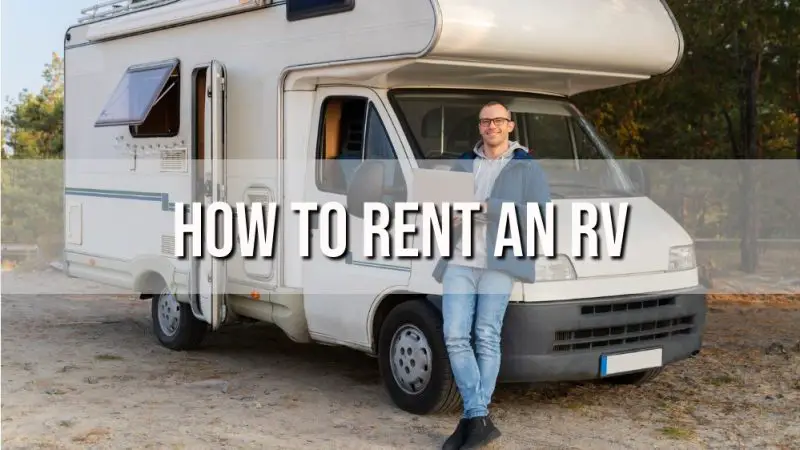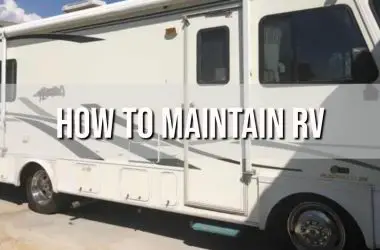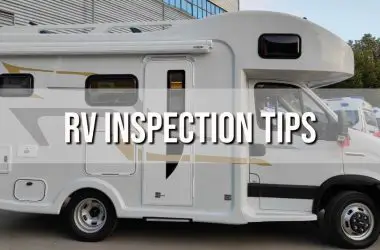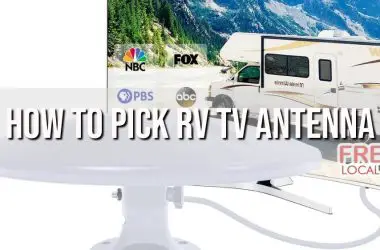To rent an RV for a road trip is an exciting way to see the country from the comfort of your own (rented) home on wheels. Renting an RV provides freedom and flexibility to travel on your own schedule, while having all the necessities like sleeping quarters, kitchen, bathroom and more. With the growing popularity of RV travel, renting one for your next vacation can be an affordable and memorable experience. This article will provide tips and advice for renting the right RV and planning a successful road trip adventure.
Key Takeaways
- Consider the budget, size and features needed when choosing an RV rental. Class C and travel trailer RVs often work well for first-timers.
- Book early and read rental company policies closely. Ask about fees, mileage limits and insurance requirements.
- Inspect the RV thoroughly at pick-up. Make sure appliances, electronics and features function properly.
- Plan your route in advance and make campground reservations where needed. Allow flexibility for unexpected stops.
- Prepare with safety items, maintenance tools and RV-safe products. Follow all operating procedures.
Understanding RV Types
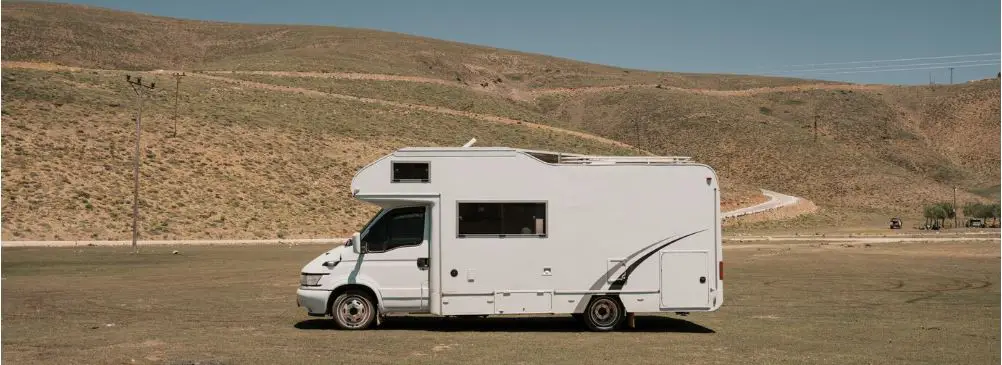
The first step when renting an RV for a road trip getaway or vacation is deciding what type and size of vehicle will work best for your travel plans and group.
RVs range greatly in size, amenities, driving ease, and budget to meet diverse needs. From compact campervans and trailers to expansive luxury motorhomes, there are many RV options to consider.
Class A Motorhomes
Class A motorhomes are the largest type of RV available. These bus-sized homes on wheels can be over 40 feet long and offer maximum amenities and living space. Slide-out sections provide expanded interior room.
Large galleys and multiple bathrooms allow comfortable travel for big families or groups. Oftentimes Class A motorhomes include luxury features like full master bedrooms, flat screen TVs, and residential refrigerators.
The substantial size does impact driving though – Class A RVs can be challenging to maneuver and limit where you can take them off highways. They also come with a hefty rental price tag due to the high-end amenities and ample space.
Class B Camper Vans
For travelers looking for a smaller, more nimble RV rental, Class B camper vans are an excellent choice. Also known as sleeper vans, Class B RVs are built on a van chassis for easy cruising and parking. They are compact in size, usually under 20 feet long, making them ideal for couples or up to 4 people.
What Class B camper vans lack in space they make up for in flexibility and driving ease. Their efficient layouts make smart use of converting benches to beds, deploying compact kitchen units, and outfitting small bathrooms.
Renting a camper van allows you to drive, park, and camp conveniently while still enjoying home comforts.
Class C Motorhomes
In between the bookends of massive Class A motorhomes and compact camper vans lies a happy medium – Class C motorhomes. Class C RVs provide family-friendly amenities with more manageable driving.
They are an ideal choice for first-time RV renters. A Class C is built on a truck chassis and often includes a lofted bed above the cab. The living space extends behind the driver’s area, with lengths typically ranging from 20-32 feet. This allows room for full galleys, bathrooms, eating areas, and sleeping space to comfortably fit 4-8 people.
Class C RVs are easier to drive than bulky Class A models while still providing adequate space and features. The rental cost is also mid-range. For these reasons, Class C motorhomes strike an ideal balance for many renters.
Travel Trailers
Travel trailers are another popular RV rental option if you have a suitable vehicle for towing. Travel trailers attach to a hitch on a truck, SUV, or van. They provide all the living amenities you need once set up at a campsite while avoiding the cost of renting a motorized RV.
Travel trailer sizes vary greatly, from basic small pop-up tent trailers to expansive fifth wheel luxury models over 30 feet long. Depending on the size, they can sleep from 2-8 people comfortably. Travel trailers allow flexibility in choosing the tow vehicle but do require some towing experience.
Truck Campers
For truck owners seeking optimized mobility, truck campers are a novel rental choice. These are slide-in units designed to fit in the bed of pickup trucks, essentially converting the truck into a mini-RV.
Truck campers provide basic living space including a dinette bed, kitchenette, and bathroom within a compact layout. The hard-sided pop-up roof allows standing room inside. Truck campers offer great off-roading accessibility while limiting capacity to 1-3 people.
When deciding which RV rental is right for your road trip or vacation, closely consider the number of travelers in your group, your desired amenities and features, driving preferences, budget, and intended destinations. Analyzing your needs based on these key factors will guide you towards the best RV rental experience. For most first-time RV renters, Class C motorhomes and mid-sized travel trailers are great options to start.
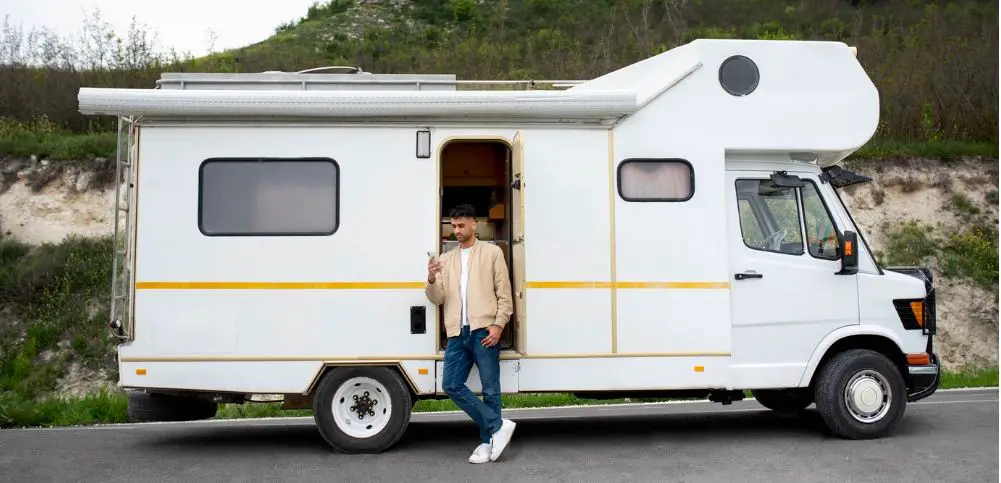
Key Factors to Consider When Renting an RV
Finding the perfect recreational vehicle rental for your road trip or vacation requires careful consideration of several key factors. Taking the time to assess your trip plans and preferences will help guide you to choosing the ideal RV rental.
Budget
One of the most fundamental factors is establishing your RV rental budget. Costs can vary greatly depending on the type of vehicle, length of trip, peak season surges, and mileage needs.
Class A luxury motorhomes typically have the highest rental rates while basic campers and trailers are more affordable. You can expect to spend approximately $100-250 per day but peak summer rates for larger RVs could be $500+ per day.
Be sure to look at total trip costs as longer rentals may provide a better value overall. Another budget consideration is mileage – some RV rentals limit the daily or total miles included so estimate your mileage needs accordingly.
Size and Type of RV
Closely evaluating the RV size and type is key as well. Make sure to choose an RV rental that comfortably fits your group size and camping requirements. The number and ages of travelers in your group will determine sleeping needs and capacity.
Also think through your must-have amenities like full bathrooms, kitchens, exterior entertaining space, or slide-outs for expansive interior room. If you plan lots of cooking on the road, invest in a larger galley setup.
If you’ll be navigating winding mountain passes, a compact RV handles curves better than a hulking 40-foot Class A. Matching the RV rental layout and features to your trip expectations is vital.
Amenities and Features
You’ll also want to consider the specific amenities and appliances included in your prospective RV rental. Whether it’s air conditioning, outdoor kitchens, generator power, entertainment systems, washer/dryer units, or WiFi hotspots, RV features vary greatly.
If you need the accessibility of a wheelchair-friendly layout, make sure to find an RV rental equipped to your needs. Don’t assume all RVs include the same standards. Closely review the included features when making your decision.
Destination and Route
Your intended route and destinations will also guide your RV rental selection. Note any size restrictions for campsites or attractions you want to visit – large Class A motorhomes may not have access whereas a camper van can more nimbly navigate park roads and tighter sites.
And carefully map out your expected route, taking into account any low clearances, weight limits, steep mountain grades, or hazardous conditions unsuitable for larger vehicles. Choosing the right RV for the planned trip itinerary ensures a smooth, enjoyable vacation.
Duration of Trip
One final factor to weigh is the duration of your RV getaway. For short weekend jaunts, a basic camper may suffice. But for extended multi-week trips full living amenities and features will be appreciated.
Carefully calculate costs for longer rentals as you may get better overall value from weekly or monthly rates. For lengthy trips, you can also consider renting certain camping gear instead of packing everything.
By thoroughly assessing your trip expectations against RV options using these key decision factors, you’ll be equipped to select the ideal rental for a memorable vacation. Keep an open mind, as the perfect RV for you may not be the biggest or flashiest, but rather the one that best fits your needs.

How to Find the Right RV Rental Company
With many rental companies and dealerships offering RVs, it pays to do research before booking. Here are important criteria to evaluate when selecting an RV rental provider:
Reputation
Read customer reviews on independent websites and check ratings on the Better Business Bureau. Look for consistent reports of clean, well-maintained RVs and fair policies from the company.
Policies and Terms
Review all policies, rental terms, fees and restrictions closely before signing an agreement. Be clear on mileage limits, generator use, pet policies and any age or license requirements.
Support and Services
Ask what support resources are available during your rental, such as roadside assistance and emergency help. Inquire about extras like RV starter kits and kitchenware rentals.
Leading national RV rental companies like Cruise America, RVshare and Outdoorsy offer large fleets, competitive rates and support programs. You can also find local RV rentals from dealerships and private owners. Comparing multiple providers helps identify the best RV and rental terms for your road trip.
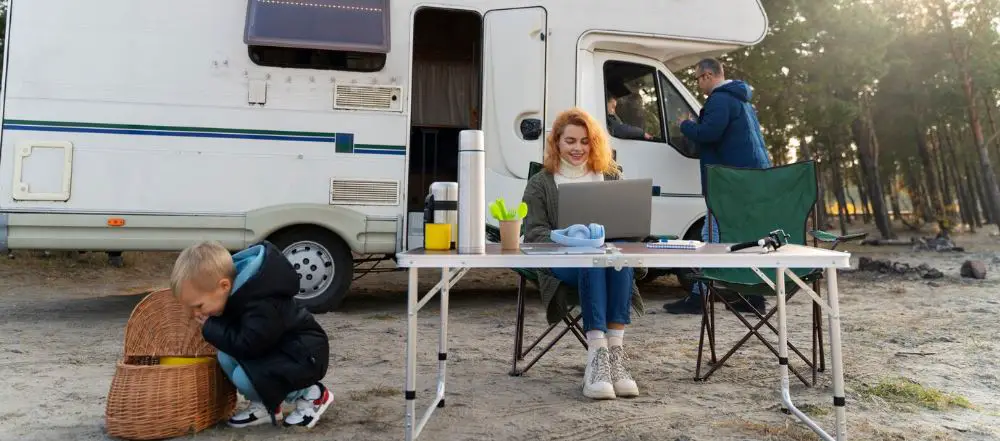
Essential Steps in the RV Rental Process
Once you’ve selected the ideal RV rental company for your road trip or getaway, there are several key steps to take before excitedly hitting the open road. Following a thorough RV rental process ensures your vacation starts smoothly and safely.
Booking
Reserve your chosen recreational vehicle as far in advance of your trip as possible, especially during peak summer travel times when availability becomes limited. Try to book at least a few months ahead of time for popular seasons.
You’ll need to complete all rental paperwork thoroughly. This includes the rental agreement outlining fees, mileage, insurance requirements, allowable areas, and other terms. Make sure to read the agreement closely and understand all stipulations before signing.
You’ll also need to pay rental deposits when booking to hold the reservation. Policies vary, but deposits are often 25-50% of the total rental cost. The remainder of the fees are usually due a set number of days before pickup.
During booking, confirm all trip details – correct dates, RV type, rental office location for pickup, and contact information. Planning ahead ensures you get the ideal RV for your vacation timeline.
Inspection
The next critical step occurs when you pick up the RV rental. Be sure to allow enough time at the rental office for a thorough inspection before hitting the road.
Walk around the exterior first checking for any damage, wear and tear, or issues. Look for paint scratches or dents that could lead to leaks. Inspect the condition of tires and check tread depth – ideally tread should be above 3/32 inch for safety.
Make sure all exterior lighting is functioning – headlights, brake lights, turn signals, marker lights. Examine the generator, propane tanks, storage compartments and bay doors. Also check that exterior latches, doors, vents and windows operate smoothly. Scan the roof and ladder for any defects.
Moving inside, investigate every nook and cabinet in the RV. Test all fixtures and appliances – stove, oven, grill, refrigerator, freezer, microwave, sink, faucet, shower, toilet, lights, fans, heating, and air conditioning. Make the beds to check mattress condition and test any fold-out beds or dinette conversions.
Thoroughly inspect upholstery, carpeting, and window treatments for stains, tears, or uneven wear. Look in all interior compartments for signs of water damage, leaks, pests, or strange odors. Empty the refrigerator fully to avoid leftovers. Ensure all electronics function – TV, radio, DVD player, alarm system, battery monitor panels. Make sure all safety items are stocked – fire extinguisher, first aid kit, flares, reflective triangles.
Complete a test drive to check steering, brakes and acceleration. Practice turning, backing up using the backup camera, and activating signals. Check handling at highway speeds. Use the generator, raise slide-outs, deploy awnings and stabilizers.
This comprehensive inspection allows you to verify all systems and features are in good working order before embarking on your RV vacation. Be sure to note any issues to the rental company before accepting the vehicle.
Insurance and Roadside Assistance
When booking your RV rental, ask the company to explain insurance requirements and options thoroughly. Most rentals require basic liability coverage but you may want supplemental insurance for peace of mind.
Also consider purchasing additional roadside assistance services offered through the rental company. This provides support for any mechanical issues, flat tires, or problems on the road.
Preparation and Packing
Make sure to also schedule a walk-through tutorial on how to operate the RV’s systems and features before heading out. It takes time to get comfortable with RV driving, dumping tanks, maintenance, generator use and more.
Never assume you know how to work everything – take advantage of the rental team’s expertise so you fully understand the specifics of your RV before departure. The thorough walk-through, along with the RV binder of operating procedures, ensures you can confidently operate it.
Following this comprehensive rental process – booking in advance, inspecting meticulously, reviewing insurance needs, completing an operational tutorial – sets you up for a stress-free and fun-filled RV vacation right from the start!
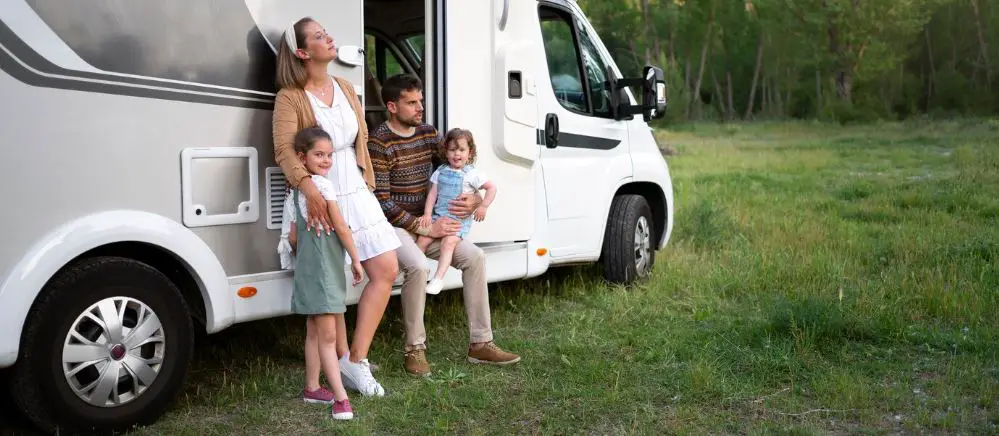
Tips for a Successful RV Road Trip
To make the most of your recreational vehicle trip, proper planning and preparation is key. Here are useful tips for an amazing RV vacation:
Planning Your Route
Map out planned destinations and overnight stops in advance. Confirm that your RV can access sites with any height, length or road restrictions. Allow for flexibility in case you want to extend stays or take unplanned detours.
Campsite Reservations
Book ahead for peak season travel, especially at popular state/national park campgrounds. Consider alternating between reserved sites with nights at Walmart/Cracker Barrel parking lots for savings.
Safety Measures
- Stock an emergency kit – flares, jumper cables, tools, first aid.
- Secure anything that could move while driving – luggage, dishes, furniture.
- Check tire pressure and lug nuts regularly.
- Always back up slowly using a spotter for guidance.
- Use night driving lights in dark conditions.
- Program GPS and plan routes to avoid hazardous mountain roads.
- Purchase an emergency roadside assistance plan for peace of mind.
Maintaining the RV
Perform daily maintenance checks – generator oil, battery levels, leak inspections. Keep the interior clean. Dump gray/black tanks regularly at dump stations. Report any issues.
Following road trip best practices will keep your rental RV humming and help create wonderful memories.
Conclusion of How to Rent an RV
Renting an RV for your next adventure opens up flexible travel options across the country. By considering the type of RV needed, finding a reputable provider, inspecting thoroughly and preparing for the road, renting can be easy and affordable. Use these tips to start planning your own memorable RV road trip vacation. The open road awaits!
Frequently Asked Questions
What are some national RV rental companies?
Some of the largest national RV rental companies include Cruise America, RVshare, Outdoorsy, El Monte RV, Road Bear RV Rentals, and Campanda. These companies have rental locations across the country and large fleets with a variety of RV options.
What is the cheapest way to rent an RV?
The most budget-friendly options for renting an RV are choosing a basic campervan or trailer, avoiding peak summer dates, booking for longer rental periods, limiting mileage needs, and splitting costs with other travelers. Checking last minute deals and renting privately through platforms like RVshare can also save money.
How much does it cost to rent an RV for a week?
RV rental costs for a week generally range between $500-$2000, based on the vehicle type, size, features, and season. More basic camper trailers can be around $100 per day while large motorhomes are $200-300 per day. Weekly and monthly rates offer the best value for longer trips.
What do first-time RV campers need?
First-time RV renters should come prepared with RV-safe products, a power adapter, basic tools, flashlights, battery operated fans/lights, surge protector, leveling blocks, a water hose, and fire extinguisher. Also pack bedding, towels, cookware, plates, and cutlery.
What time of year is best to rent an RV?
The best times to rent an RV are typically spring and fall when the weather is mild and there are fewer crowds. Summer rates are highest. Try to book 6-12 months out for peak dates. For last minute deals, check availability in winter months.
What are the differences between Class C and other types of RVs for rent?
Class C motorhomes are mid-sized, usually 21-32 feet long. They are easy to drive, sleep 4-8 people, have full amenities, and are often cheaper than Class A RVs. Compared to trailers, Class Cs are self-contained and don’t require a tow vehicle. Class B camper vans are the smallest, best for 1-4 people.


